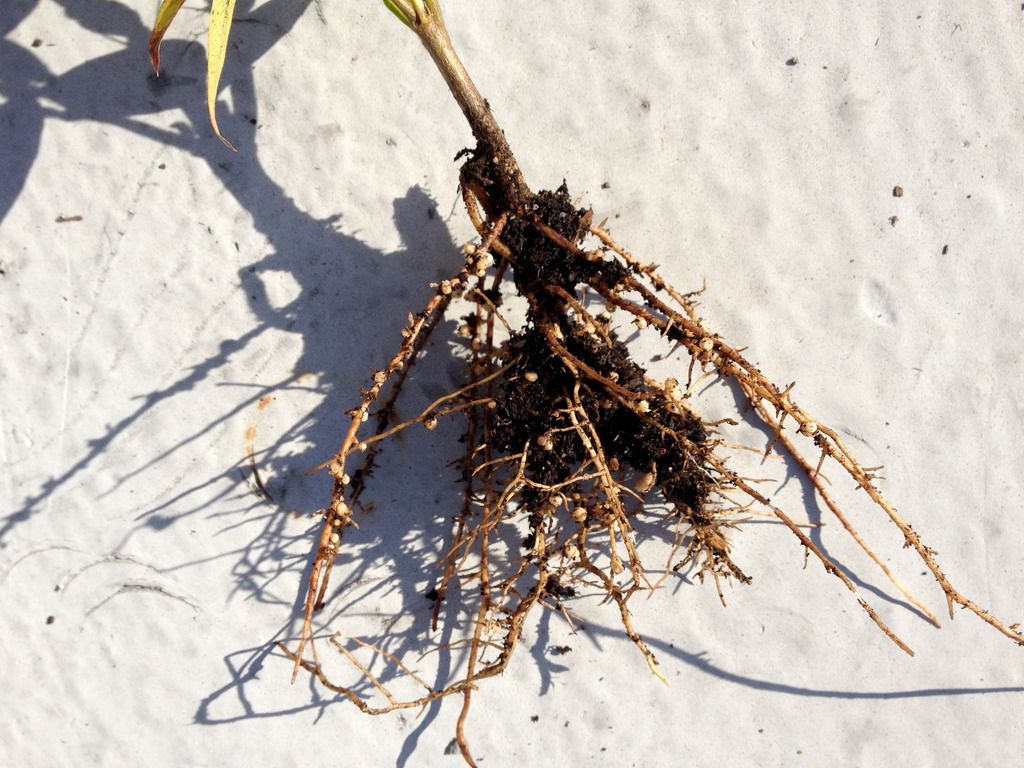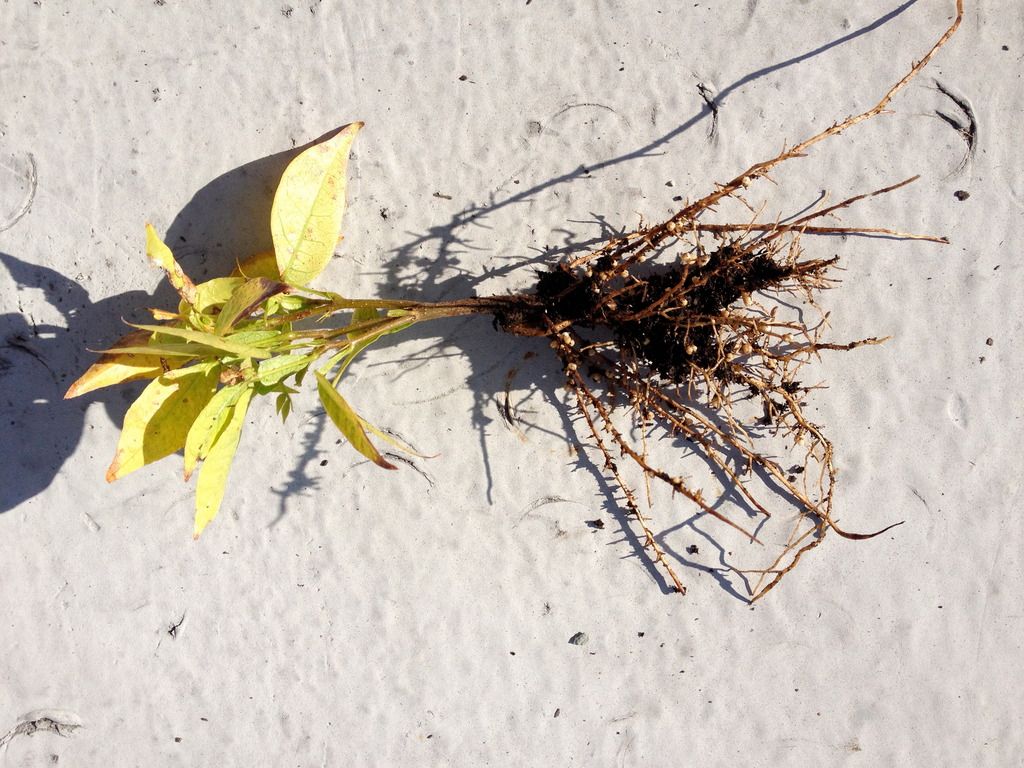A couple of years back I had been wondering whether Ice cream bean is capable of fixing nitrogen outside of the tropics/native regions given that it wouldn't have access to the normal symbiotic bacteria. To test this out, last year I got some Inga spectabilis seeds from Oscar and inoculated them upon planting with a mix of two standard commercial bean/pea inoculants (both from groworganic.com -- one was a misc N-fixing inoculant and the other a cow pea inoculant). I planted in good potting soil.
And the result appears to be, yes, they can fix nitrogen when given these sorts of standard inoculants!
Inga spectabilis is not well suited to my climate, so it grows very slowly (unlike Norman's Inga, of which I have two now and grows quite fast). I pulled up one of the seedlings and the nodules are clearly visible. (The plant was in a windy spot and wasn't doing well, so it was worth pulling up.)



 I'm looking forward to trying it out to see how it does in Northern California. (Supposedly it can handle down to -4 C.) Folks in local CRFG circles also have referred to a cold-tolerant (highland?) species, Inga affinis, but apparently nobody has been able to find seeds for it.
I'm looking forward to trying it out to see how it does in Northern California. (Supposedly it can handle down to -4 C.) Folks in local CRFG circles also have referred to a cold-tolerant (highland?) species, Inga affinis, but apparently nobody has been able to find seeds for it.
